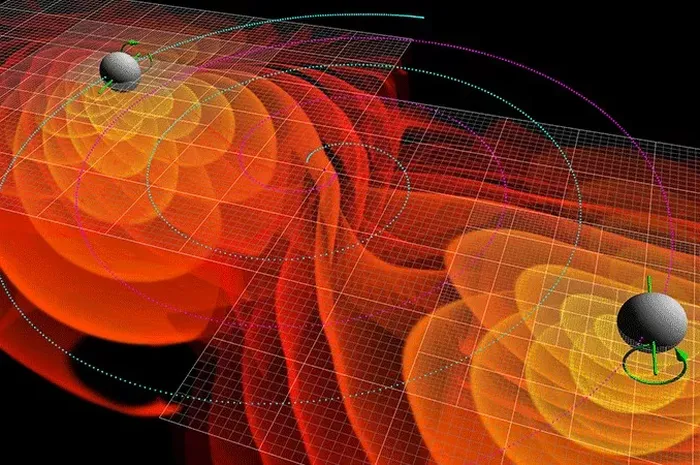C. Henze/NASA Ames Research Center
–
Gravitational waves from two black holes collide and merge.
–
Nationalgeographic.co.id—International scientists belonging to the LIGO-Virgo-KAGRA collaboration announced that they have observed 35 new events that release gravitational waves, tiny vibrations in the fabric of space-time. These gravitational wave events were caused by cosmic collisions, with 32 of them likely involving two black hole which collide with each other.
Two more events are likely collisions between black hole with neutron star. As for the latter event, scientists are not sure exactly what type of compact object is involved.
This is the second half of the third observation of observatory LIGO and Virgo gravity waves are activated. These observations aimed at studying the universe were made between November 2019 and March 2020.
The release of the observation data has been uploaded on the paper storage site ArXiv and has been submitted for publication along with three other accompanying papers. The observations bring the total number of gravitational waves detected so far to 90.
Next page…
The 35 cosmic events detected recently cover the entire mass range of gravitational waves detected so far. That means black holes of all shapes and sizes have been observed colliding. From neutron stars that are only slightly heavier than our Sun (but compressed into a ball the size of a city) to black holes that are 100 times heavier than our Sun.
“It is only now that we are beginning to appreciate the incredible diversity of black holes and neutron stars. Our latest results prove that they come in a wide variety of sizes and combinations,” said Christopher Berry, member of the LIGO Scientific Collaboration, as reported by Reuters. IFLScience.
“We’ve solved some old mysteries but discovered some new ones as well. Using these observations, we’re getting closer to unlocking the mystery of how stars—the building blocks of our universe—evolved.”
Among these strange events observed, one involved a massive black hole 33 times the mass of the sun with a very low mass of neutron star, which is about 1.17 times the mass of the sun. It is one of the lowest mass neutron stars ever observed, using either gravitational wave observatories or conventional electromagnetic telescopes.
Also Read: Why Don’t Black Holes Swallow All Objects in the Universe?
One other event is believed to be a merger between two black holes. The two objects merging are uncertain, but scientists believe the merging process occurred between a black hole with a mass 24 times the mass of the Sun and a much lighter black hole of about 2.8 solar masses.
For now, the researchers believe that lighter black holes fit the smaller mass profile better. However, the possibility that this mass is a very heavy neutron star cannot be excluded. This is similar to the previous puzzling events recorded by the team of scientists.
“Each new observation brings new discoveries and surprises. The third observation sees detection of gravitational waves becoming a thing of the day, but I still think each detection is exciting!” says Hannah Middleton, a postdoctoral researcher at OzGrav, University of Melbourne.
“Future observation trips will definitely find more unusual events.”
The two observatories LIGO located in the United States and Virgo located in Italy are currently inactive and undergoing several upgrades in preparation for their fourth observations. The three observatories will join the KAGRA observatory in Japan, and all four will be online by the end of 2022.
“It turns out that the gravitational wave universe is very interesting,” said Maya Fishbach, a researcher at NASA and a member of the collaborative team of scientists.
“Our improved detectors will be able to pick up on quieter signals, including black holes and neutron stars merging further afield, with signals from billions of years ago. I can’t wait to find out what else is out there.”
Also Read: Five Things That Convince Us That Black Holes Really Exist
PROMOTED CONTENT
Featured Videos
– .


